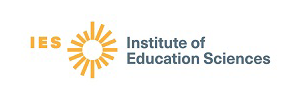Can a coach use AIM Coaching with any subject or with any practice?
Yes! AIM Coaching is meant to be curriculum, subject, and practice independent. This means that coaches can use AIM Coaching to support teachers’ implementation of any set of practices. See the OSEP Research and IES Research pages for an example of how we link AIM Coaching with a set of evidence-based literacy practices called Promoting Adolescents’ Comprehension of Text (PACT).
What if we only have a part-time coach? How much time does a coach need to implement AIM Coaching?
Coaches need to devote approximately 3.5 hours to each teacher across a 5-week period. This means that part-time coaches can implement AIM Coaching if they have the time to dedicate to all of their teachers. The AIM Coaching team is happy to support schools in creating an AIM Coaching schedule that coaches can use to support their teachers. Check back on this website for sample coaching calendars.
Can a coach use AIM Coaching with other types of coaching models?
It is possible to use AIM Coaching with other coaching models. However, there are several questions to consider. Will the coach have enough time to devote to AIM Coaching and other coaching models? Will this arrangement be confusing for coaches and teachers? What practices will be targeted using AIM Coaching? What practices will be targeted using another coaching model? As one example, the coach could use AIM Coaching to support teachers’ implementation of evidence-based literacy practices while using another coaching model to support teachers’ behavior management.
How does a coach learn how to implement AIM Coaching?
Once development is complete, coaches can participate in online AIM Coaching professional development modules. In addition, we anticipate creating a set of online resources for follow-up support. Check back soon for details on both of these efforts.
What is the theoretical background of AIM Coaching?
AIM Coaching draws from adult learning and professional learning theory. The first of these theories includes Kwakman’s (2003) model of professional learning for teachers in secondary schools. This model outlines several personal factors (e.g., appraisals of a professional learning activity’s feasibility), task factors (e.g., pressure of work), and work environment factors (e.g., management support) that influence teachers’ participation (e.g., collaborative effort) in professional learning. Because these factors play an important role in teachers’ willingness to collaborate with coaches, it is important for coaches to consider all factors and tailor their support accordingly. Improving teachers’ level of collaborative effort in professional learning can improve their instructional practices and, ultimately, their students’ achievement.
AIM Coaching is also informed by the adult learning theory of andragogy (Edwards et al., 2013; Knowles, 1980; 1984; 1990). This theory includes a set of assumptions—that adult learners are self-motivated, want to apply new knowledge immediately, and move from dependency to increasing self-directedness as their knowledge increases. Knowles suggests several practical implications for adult educators (e.g., coaches). For instance, adult educators should assess adult learners’ (e.g., teachers) specific needs, establish learning objectives based on their findings, and work with learners collaboratively to increase their learning experience, knowledge, and, ultimately, skills (e.g., implementing literacy interventions).
Aligned with Kwakman’s model of professional learning and the theory of andragogy, AIM Coaching requires coaches to (a) assess teachers’ levels of skill and will in implementing evidence-based literacy practices and (b) determine targeted learning objectives based on individual needs of teachers. Coaches then work collaboratively with teachers, as suggested by Knowles (1984; 1990), to improve implementation of evidence-based literacy practices. Specifically, AIM Coaching features performance feedback (Pierce, 2014), which includes direct observation of a teacher implementing a specific practice in a classroom setting, followed by feedback on the practice (Stormont & Reinke, 2014). Providing immediate feedback to teachers is critical to ensuring high levels of implementation fidelity and sustainability, particularly in the early stages of learning a new teaching practice (Kretlow & Bartholomew, 2010; Scheeler et al., 2004). Knowles (1984) suggests that adult learners are problem centered and motivated to learn by internal factors. Thus, during AIM Coaching, coaches and teachers consider the performance feedback and collaboratively set goals that will enhance future implementation.
What research supports this model?
AIM Coaching is an adaptive intervention. The key assumption underlying adaptive interventions is that individuals (e.g., teachers) differ in their response to interventions and that to optimize outcomes, interventions should be individualized and adapted based on individual progress (e.g., Bierman et al., 2006; Marlowe et al., 2008; McKay, 2005; Nahum-Shani et al., 2012). Two key characteristics describe adaptive interventions: (a) the type or dosage of intervention is individualized based on participants’ characteristics and (b) the intervention is repeatedly adjusted over time in response to ongoing performance. Adaptive interventions are multistage in nature and include a sequence of decision rules that recommend when and how the intervention should be modified to sustain long-term impact.
Adaptive interventions are becoming increasingly common in the field of special education. In a key series of studies funded by the National Institute of Child Health and Human Development, Vaughn, Wexler et al. (2011) experimented with an adaptive intervention provided to middle school students with (or at risk for) disabilities who received differing doses of literacy instruction based on initial scores on standardized reading measures. Biweekly, students were reassessed by the teacher and differing doses of literacy instruction were provided based on student need. Results from this study indicated that students who received the adaptive intervention outperformed the business-as-usual comparison students to a statistically significant level on measures of decoding, fluency, and comprehension. Fidelity scores related to the adaptive intervention delivery were very high, providing evidence that adaptive interventions are effective and feasible to implement.
Adaptive interventions with adults have been studied in related fields. For example, online game developers capitalize on adaptive interventions to increase learning online and increase the time on task (e.g., Kickmeier-Rust et al., 2007). Adaptive interventions are also used in mental health to improve outcomes, such as mood disorders (e.g., Kilbourne et al., 2013), problem behaviors (e.g., Connell et al., 2007), and addiction (e.g., McKay, 2005). Using adaptive interventions to encourage the uptake of new practices among adults is also supported by research evidence. In several examples, adaptive interventions designed to increase walking exercise were highly effective, with effect sizes ranging from 0.69 to 0.74 (Adams et al., 2013; King et al., 2008).
To date, adaptive intervention design has not been applied to professional development and coaching. We relied on the extant evidence from these related fields to design AIM Coaching—an adaptive intervention applied to teacher education to improve teacher fidelity to evidence-based literacy practices within a schoolwide model to improve reading outcomes for all students, including students with disabilities.




